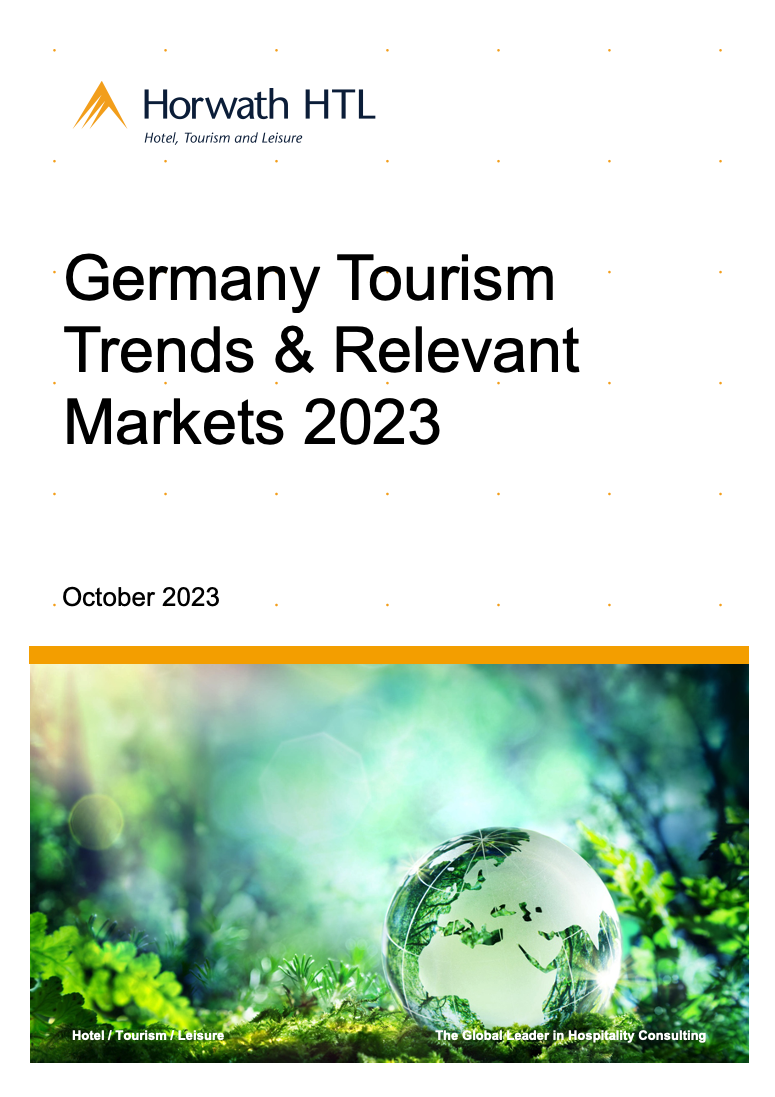
Market Report
Germany Tourism Trends & Relevant Markets
Horwath HTL’s latest trend study – in collaboration with the Heilbronn University of Applied Science – focuses on current trend drivers shaping the tourism sector, including the digitalisation of services, the personalisation of travel experiences and the rise of sustainable tourism.
The tourism industry is facing a dynamic environment influenced by a variety of factors: rapid globalisation, a high degree of digitalisation, changing travel habits of a fast-growing population and greater environmental awareness in times of climate change are among the key influencing factors that are continuously changing the tourism industry.
These changes are forcing the tourism sector to evolve and adapt its offerings.
Germany continues to be a significant player in Europe’s travel and tourism sector, contributing 6.2% to the continent’s GDP. Despite facing challenges like skilled labor shortages and economic uncertainties, the industry is evolving, with an increasing focus on sustainable and flexible travel options.
In 2022, Germany recorded 450.8 million overnight stays, with domestic tourism increasing by 37.1% and international stays rising by 119.6%. Online booking tools now account for nearly 50% of all bookings, while traditional travel agencies have seen a decline. Hotels and guesthouses are recovering more slowly, but campsites experienced a 12.4% increase in overnight stays compared to 2019. The car remains the most popular mode of transport for domestic travel, followed by rail and mobile homes.
Trends:
- Sustainability: Sustainable travel is gaining attention, with more trips to Northern Europe involving certified eco-friendly accommodations. However, this trend has only modestly affected overall travel behavior, with only 5% of holidays in 2021 influenced by sustainability considerations.
- Digitalization: The tourism sector is increasingly adopting digital technologies, with AI and machine learning enhancing online booking portals for personalized recommendations. Virtual and augmented reality tools are also being integrated to offer immersive travel experiences.
- Ski Tourism: Climate change is threatening ski tourism, with an increasing reliance on artificial snow, highlighting a conflict between sustainability and tourism demands.
- Changing Society: Technological advancements are creating new opportunities, including space and underwater stays, while economic disparities are driving distinct trends in luxury and budget travel.
Relevant Markets
- Wellness Tourism: Health-oriented holidays are gaining popularity, with the global wellness tourism market projected to reach USD 1,020 billion by 2030.
- Eco Tourism: Despite high awareness of sustainable tourism, actual participation remains low, with few travelers willing to pay more for eco-friendly options.
- Bicycle Tourism: Cycling, particularly e-biking, is growing in popularity, especially among older travelers, due to its health and environmental benefits.
- Camping Tourism: Camping continues to gain momentum, with more people choosing caravans, motor homes, or tents for their vacations.
- Hiking Tourism: Hiking has grown in popularity across all age groups, particularly for short to medium-distance hikes.
- MICE Market: The Meetings, Incentives, Conferences, and Exhibitions (MICE) market is shifting toward hybrid events that combine in-person and online participation, a trend that is expected to continue due to cost savings and increased reach.
Germany’s tourism industry is adapting to emerging trends with a focus on sustainability, digitalization, and personalization. Key growth areas include wellness, eco, and bicycle tourism, positioning the sector for continued success.
Download the report
For detailed charts, graphs, and further analysis, download the full report here





